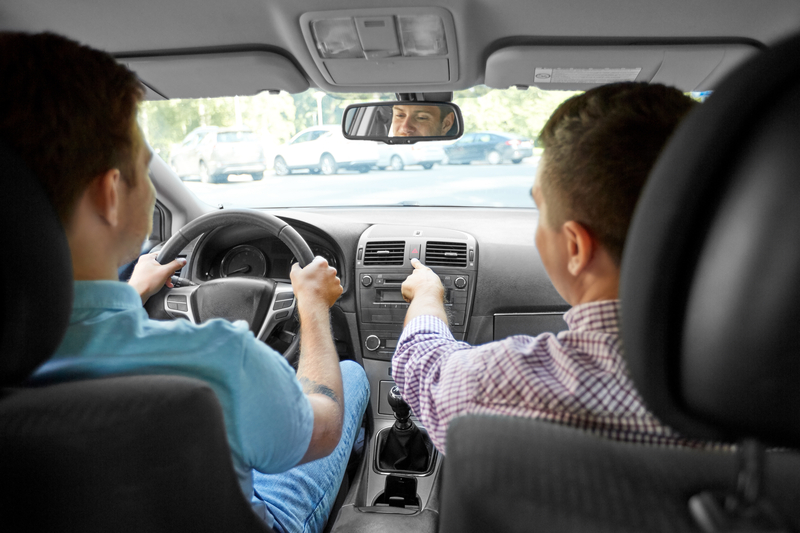Summer school targets drivers who have been around the block

High-speed maneuvers, quick braking and vehicle weight transfer—just another day at the office for NASCAR drivers. But a wide variety of schools offer drivers of all ages to assimilate the experience of pros into their daily driving.
And they can add a high quotient of fun while learning regardless of the driver's level of experience.
"Winter and summer driving courses teach drivers every skill necessary to control their cars in the most challenging conditions," said Mark Cox, director of the Bridgestone Winter Driving School in Steamboat Springs, Colo. "If you learn them in the most challenging conditions, then daily driving is easy."
There are hundreds of schools across the country, and all of them have different philosophies and training methods. Students who participate in them can learn how to handle everything from icy roadway conditions, to sudden banked turns on slick roads and accident avoidance. "Driving is like any sport, only it's a sport we take for granted," Cox said. "A lot of people think nothing of taking lessons for golf or tennis, but they neglect to take a course in a sport that can save their life."
"Some corporate clients who attended the Bridgestone Driving School have seen accident rates drop by up to 40 percent," Cox said.
"These courses are not intended as a racing school—it's a driving school," said David Ray, founder of Hooked on Driving. "You don't need to go fast, you just need to get better."
What if you've been driving for years and have faced just about every condition Mother Nature can throw at you?
Summer driving schools differ from winter driving schools, just like actual road conditions differ from season to season.
"Winter schools tend to focus on driving with extreme elements, but a summer school uses a dry track and different factors are at play," Ray said. "When the surface is dry, we can work on some different skill sets."
One of those skills is accident avoidance. Ray states that "Most people's reaction to an on-road emergency is to simply slam on the brakes and pray for the best. As a result of our school, the driver will gain confidence in what their car is capable of doing, and many times allow them to drive around a wreck."
"A common driving mistake is to slip two wheels off the road onto a dirt shoulder, and they don't know how to react," Ray said, adding that "Improper reactions often lead to accidents."
"When we talked with the local CHP, they mentioned one infamous spot on I-5 that has a lot of crashes because people drive just off the road, hit the gas too hard, overreact by yanking the steering wheel, and shoot across multiple lanes of traffic, and this is totally preventable," Ray said.
Another skill taught at summer driving schools is how to tell when brakes start to fade.
"It has a real-world application," Ray said. "It relates to a driver pushing the car downhill. The brakes get hot, and if the pedal gets mushy, they are starting to fade. We teach drivers how to handle that."
Safety is the first order of business at any good driving school. According to Ray, classroom sessions lay the groundwork for what drivers will learn behind the wheel. It starts with fundamental lessons such as how to sit and where to grip the steering wheel.
"We try to talk drivers out of one-handing the wheel and stress a nine and three o'clock position," Ray said. "One of the most important things we teach is the overall importance of smoothness on the wheel and the pedals."
"Once the basics are mastered," Ray said, "Drivers pick up the pace with instructors riding shotgun—to truly understand how those new skills help."
"We also teach students not to overcorrect," Ray said. "Only about 20-30 percent of drivers have good instincts when it comes to controlling a skid, but that's something that can be taught and practiced in a controlled environment."
Some schools allow drivers to bring their own cars, and others provide a range of vehicles similar to those used by everyday drivers. Both Cox and Ray agreed that a one-day course is the best way to start. Instructors pack a lot of information into that first day, and it usually leaves drivers craving more.
For those bringing their own vehicles to the school, Ray suggested holding off on any vehicle modifications until after they attend a course.
"Most people who upgrade their cars before our course want to add power, but after our course, they want to upgrade their brakes," Ray said.
Ray and Cox had the following recommendations for choosing a driving school:
- Look for driving schools that focus on low-speed fundamentals that turn into high-speed precision maneuvers.
- Choose a school that offers a wide range of classes to fit all skill levels.
- Inspect the course outline to see if it applies to your everyday driving. For instance, does it provide practicing skids and quick turns? Those skills quickly translate into safer everyday driving.
- Don't modify your vehicle before attending the course. You should learn how to better navigate with your existing car and then decide what is needed. Most drivers decide to improve brake systems after they've attended a course.
- Driving techniques learned "in the real world" may not necessarily offer the best approach. Driving schools gives you a chance to test your assumptions and learn new, life-saving skills.
- Does the course offer training "behind the wheel" or classroom only? The best way to improve your technique is to practice it in real-life situations designed for safe learning.
"We've gotten a lot of letters from folks who've gone through our school telling us that they were able to avoid accidents on the highway thanks to what they learned here. Folks also learn to appreciate their car much more and enjoy having more confidence in their driving skills," Ray said.